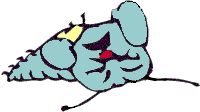 |
VFP 5 and early versions of VFP 6 have a truly insidious
bug as well. It occurs if you use DoDefault() in a method
that automatically calls the same method of other objects
(for example, a form Refresh, which automatically calls
Refresh of member objects, or KeyPress when KeyPreview is
.T., which automatically forwards the keypress to the
object with focus) and there's no code in the same method
of the parent class of the original object (the form, in
the examples). In that case, the keyword This in the other
methods of the contained object(s) (the member objects in
the Refresh example, the object with focus in the KeyPress
example) doesn't refer to the object whose code is being
executed, but to the original object whose code had the
DoDefault() (the form, in the examples). This was a truly
ugly bug and we glad it got exterminated.
|
